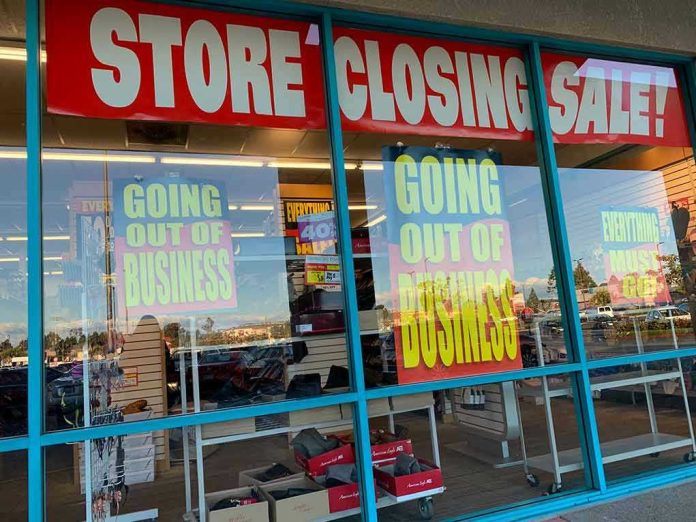
America just lost a time machine: after 208 years, the Farmers’ Almanac—the nation’s most stubbornly analog oracle—has published its final edition, leaving millions to wonder who will predict the weather, whisper gardening secrets, or remind us when to plant our peas.
Story Highlights
- The Farmers’ Almanac, founded in 1818, ends print and digital publication after the 2026 edition.
- Mounting financial pressures and the digital revolution forced the decision after over two centuries.
- Millions express nostalgia and disbelief over the loss of an American cultural institution.
- The Almanac’s blend of weather forecasts, folk wisdom, and household tips shaped generations—and its loss signals a turning point in American media and rural life.
The Final Forecast: A Cultural Mainstay Calls It Quits
On November 6, 2025, the small team behind the Farmers’ Almanac announced what many rural Americans and urban sentimentalists hoped never to hear: the 2026 edition would be its last. The news, published on the Almanac’s own website and echoed across major media, hit like a nor’easter. Those battered orange-and-green booklets—once dog-eared in farmhouse kitchens and city brownstones alike—would vanish, both from newsstands and the digital ether by the end of 2025. The silence that followed this announcement was almost reverential, as if a family heirloom had been lost forever.
The story is not just about a magazine’s demise; it’s about the end of a particular American rhythm. Since 1818, the Almanac forecasted the weather with a proprietary, much-mythologized formula involving sunspots, lunar cycles, and planetary positions. Readers trusted it, often more than the local meteorologist. Yet, economics finally caught up: print sales shriveled, and digital advertising never paid the bills. Media analysts say the Almanac’s fate mirrors the broader collapse of traditional print, where legacy means less than viral reach, and even the most loyal fans cannot stop the digital tide.
From Lewiston, Maine to Living Rooms Nationwide: How the Almanac Shaped America
Founded in Lewiston, Maine, by David Young, the Farmers’ Almanac began as a pragmatic guide for farmers and gardeners—delivering long-range weather forecasts, astronomical data, and advice for planting and harvesting. Over the decades, its content evolved, but the mission remained: demystify the seasons, preserve folk wisdom, and make sense of nature’s patterns. For generations, the Almanac was a household staple, a conduit for practical knowledge and quirky tips, from natural remedies to when to prune your apple tree. Its secret forecasting formula, passed down and fiercely guarded, became part of its charm and mystique.
Unlike its older rival, The Old Farmer’s Almanac—which continues to publish—the Farmers’ Almanac carved a distinct identity by blending weather with folklore and everyday advice. The blend proved potent: millions of annual sales in the 20th century, and a devoted following that crossed urban-rural divides. The Almanac’s slow fade is not just the loss of a publication, but a retreat of common, cross-generational knowledge—a kind of analog Google for life before smartphones.
Public Mourning and the Search for What’s Next
Reactions to the Almanac’s shuttering have ranged from disbelief to open grief. Social media brims with laments—“One of the saddest days in history,” wrote one reader—while others swap personal stories: grandfathers consulting the Almanac before planting, mothers marking frost dates on kitchen calendars, weather predictions debated over breakfast. For many, the Almanac was more than reference; it was ritual and reassurance, a link to ancestors and the enduring rhythms of the land.
Peter Geiger, Editor Emeritus, summarized the sentiment: pride in the Almanac’s legacy, gratitude for loyal readers, and sorrow in letting go. Sandi Duncan, Editor, promised that the Almanac’s spirit—simplicity, seasonal wisdom, respect for nature—would endure, even as the publication itself disappears. Yet, nostalgia cannot pay the bills; the economic reality was inescapable. Agricultural experts and cultural historians warn that the loss will ripple through rural communities and family traditions, erasing a reliable, shared touchstone for practical living and weather lore.
What the End of the Almanac Reveals About Modern America
The Farmers’ Almanac’s closure signals a deeper shift in American life: the waning of shared, slow wisdom in favor of hyper-customized algorithms. Print media’s decline is well-documented, but the Almanac’s end stands out because it bridges past and present—science and superstition, practicality and poetry. Its demise exposes the fragility of cultural institutions in an age of relentless innovation and short attention spans. For readers over forty, the loss is acutely felt, a reminder that some kinds of knowledge do not update well, and some rituals cannot be replaced by apps or social feeds.
As the final edition circulates and the website prepares to go dark, fans cling to their copies, perhaps sensing that in losing the Almanac, we lose a piece of the American experiment itself—a faith in patterns, in nature, and in the idea that, somehow, the future could be known if only you read the right page at the right time.









